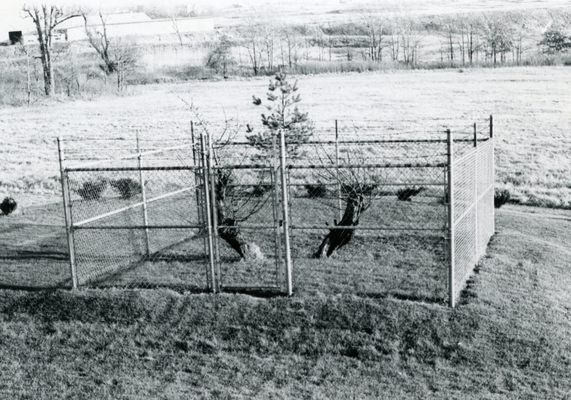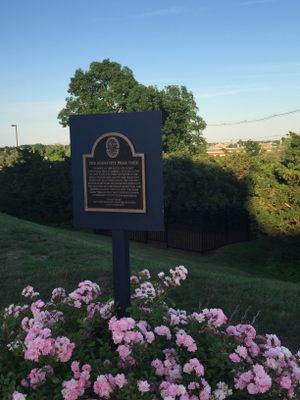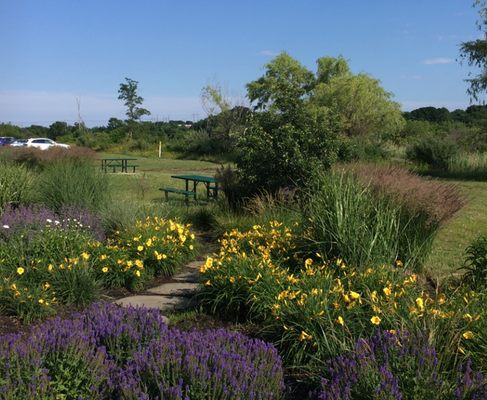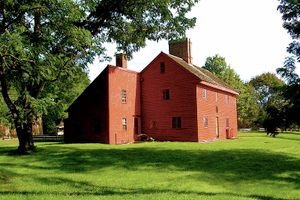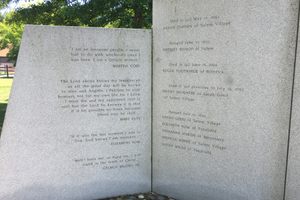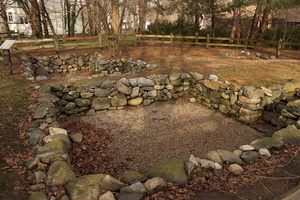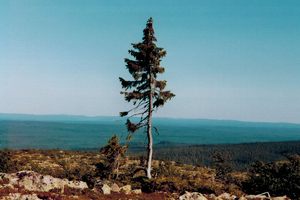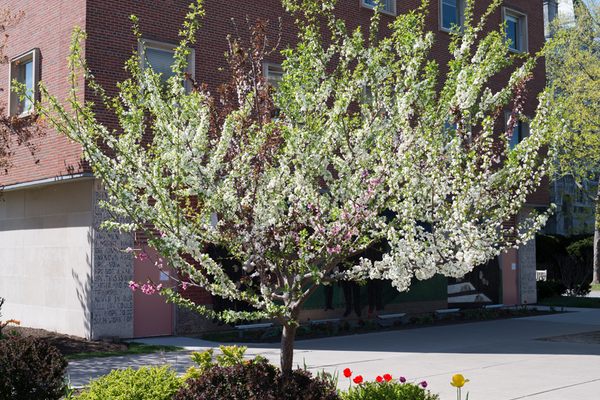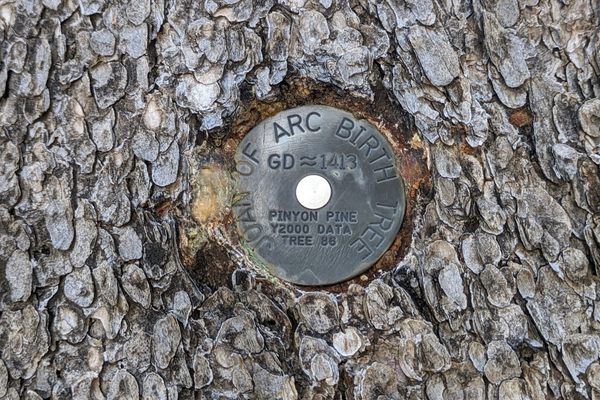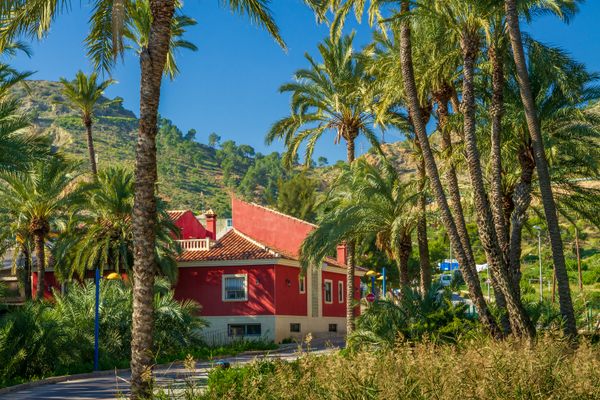About
Sometime between 1630 and 1649, John Endecott planted a pear tree at his estate in Danvers, Massachusetts. He hoped it would long outlive him, a wish that the tree far surpassed despite harsh winters, hurricanes, earthquakes, urban sprawl, and a near-fatal encounter with vandals.
Around 1628, John Endecott (sometimes Endicott, as the spelling has changed over the years) sailed from England to Salem, Massachusetts. Shortly after his arrival, Endecott became the governor of the Massachusetts Bay Colony, a position he held for 16 years. A zealous and at times hotheaded Puritan, Endecott went on to be regarded as one of the Fathers of New England.
Beyond his historic role as early settler and long-serving governor, Endecott was also known as the first man to own a sundial in America, as well as for introducing the ox-eye daisy to the colonies. He also drew much interest and admiration for his fruit trees, many of which were likely shipped out to Massachusetts from England shortly after Endecott’s own arrival.
On July 3, 1632, the General Court of Massachusetts Bay granted Endecott 300 acres of land in Danvers. He soon set about planting more fruit trees, including his now famous pear tree.
The pear tree had its fair share of admirers during the course of the next couple of centuries. It drew praise from noted botanists and featured in various botanical works and magazines. Even former President John Adams tasted its fruit and took some clippings.
But with the ups came plenty of downs, and the tree's growing fame couldn’t prevent periods of peril brought about by neglect, pests, and the serious threat of hurricanes. The tree was damaged four times by major hurricanes in 1804, 1815, 1843, and 1934, but somehow stayed standing.
Its biggest ever threat, however, was from unappreciative humans. On July 27, 1964, vandals cut off the tree's branches and much of its trunk with hacksaws. When they were done, just six feet of the trunk remained. Stripped of branches, leaves, and fruit, the tree was a sorry sight indeed, but shoots appeared just several weeks later and the defiant tree grew again.
The exact age of the tree is unknown, and it may have originally been planted at Endecott’s first home in Salem. Historians generally agree that it was planted in its current location sometime between 1630 and 1649. Whatever the precise details may be, the tree looks set to surpass 400 years of age and is already widely believed to be the oldest living cultivated fruit tree in North America.
Today, the Endicott pear tree stands surrounded by a metal fence a few feet down an embankment near a nondescript business park. Apart from the protective fence, the tree’s continued existence has also been bolstered by its newfound status as a national landmark, granted in 2011.
Scion wood genetic clones (cuttings, to you and me) were also taken from the Endicott pear tree in 1997 and added to the pear germplasm collection of the National Clonal Germplasm Repository in Corvallis, Oregon. From these, a fruit-bearing clone of the tree was grown.
And what about those pears? According to various accounts dating back a hundred years and more, the pears are hard and not too pleasant when eaten straight from the tree, but are usable in tarts and pies.
Related Tags
Know Before You Go
Difficult to find, the tree is behind a large brick building down at the bottom of a hill. If you park behind the next door Mass General building (parking is free), you can walk to it along a garden path in the back which, as a bonus, has a donated genetic descendant of the tree off a small path.
Community Contributors
Added By
Published
June 6, 2018
Sources
- https://www.kidsdiscover.com/quick-reads/endicott-pear-north-americas-oldest-fruit-tree/
- http://endecott-endicott.com/wp-content/uploads/2015/07/EndicottPearTreeProject.pdf
- https://www.goodfruit.com/endicottpear/
- http://www.newenglandhistoricalsociety.com/endicott-pear-tree-still-alive-massachusetts-nearly-400-years/
- https://landscapenotes.com/2012/06/25/the-endicott-pear-americas-oldest-cultivated-tree/
- https://web.archive.org/web/20070924202420/http://danversoracle.media.mit.edu:4000/servlet/pluto?state=30303470616765303037576562506167653030326964303033313237



